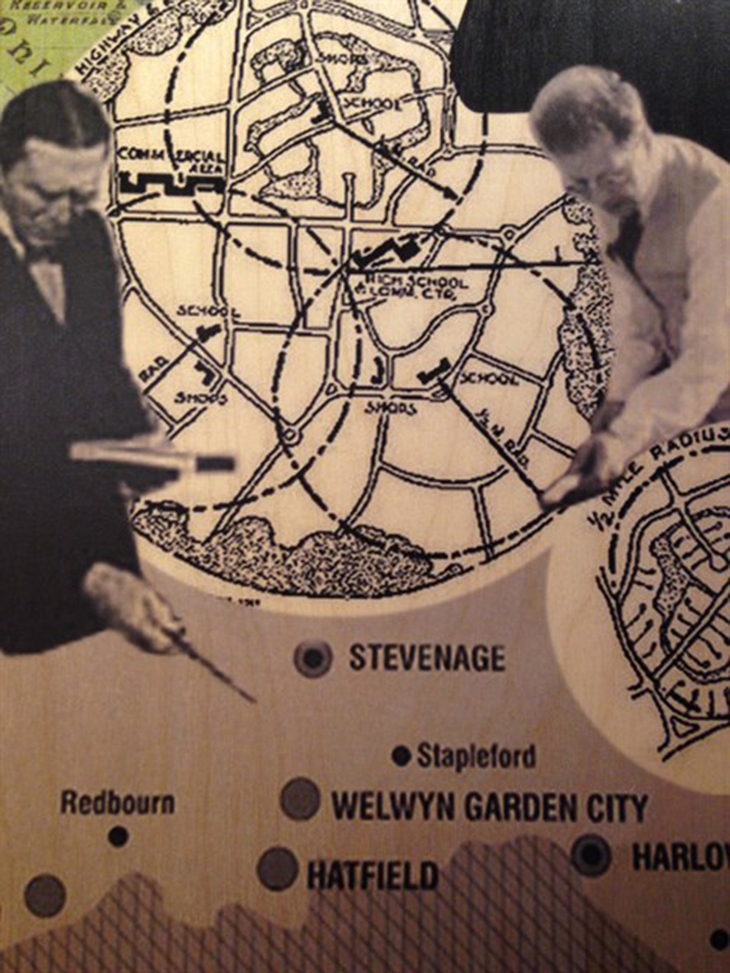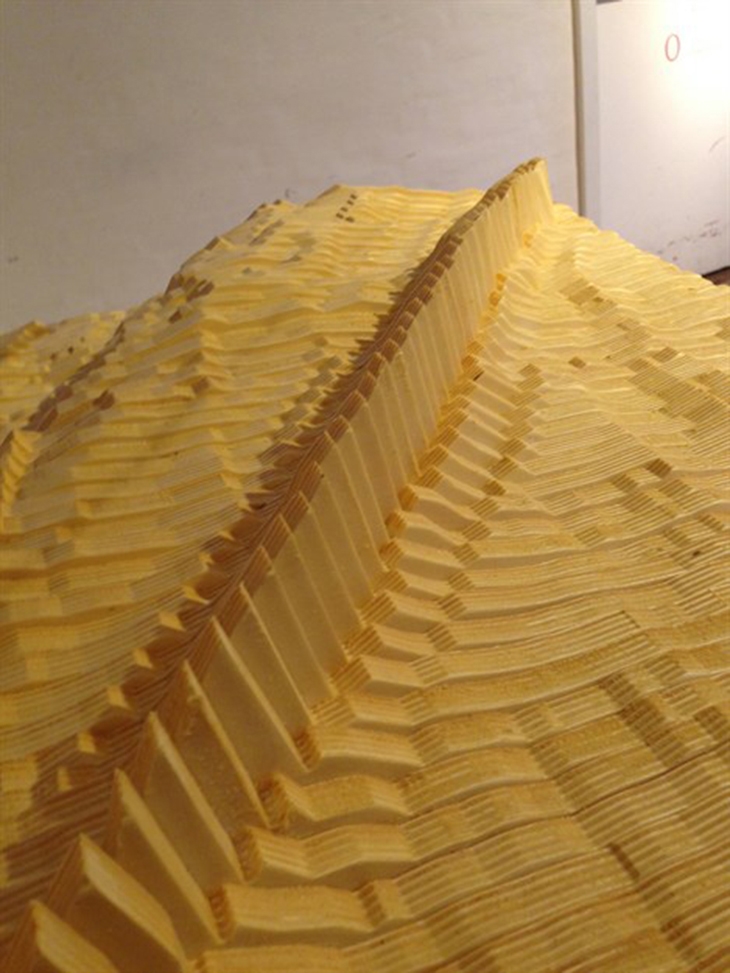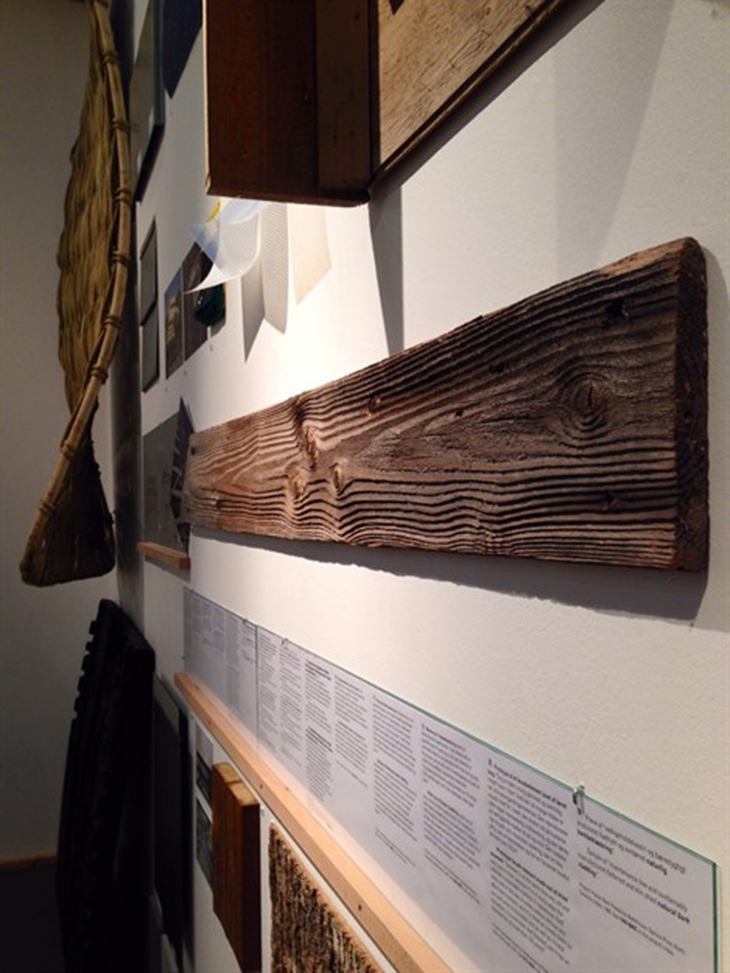Entering through the Danish Architecture Center`s eclectic book store visitors are greeted by the first exhibition, Behind the Green Door. Brussels based curators Rotor have set up 18 intriguing `stations` whereby visitors have a chance to browse 600 carefully collated objects, photographs, models and videos that inspire a questioning and debate of architecture and the desire for sustainability.
The exhibition is set up whereby detailed descriptions of each station`s objects are found in a central catalogue, purposely removed from each station so as to not cloud ones initial thoughts and judgments. It quickly comes to light that many of the objects represent parodies, questioning what sustainability really means across differing contexts. Each station reveals a hidden story, provoking a sense of awe at the collated objects that would in everyday life receive no more than a second thought.
A prime example of such feeling can be found at the station titled `perspective`. This station`s theme is centered upon construction materials, and on display is a slice of reclaimed wood with photographs of its source location and its final use in a grand U.S home. A two sided story quickly emerges as it is revealed of how this wood is labeled sustainable by those in the U.S, responsibly reclaimed and recycled by the proud homeowners who have seemingly made the `green` choice. Moving across the photographs, the destruction at the source location of the wood is shown, in Thailand. Here it seems buildings are readily dismantled and left in ruins as the `reclaimed` wood is taken, and is shipped around the world. The sustainable brand is immediately questioned as one thinks of the contradictions in perspective at play here. Is a resource or method of construction only sustainable in one place because it is salvages another? Queue many provocative thoughts on the subject!
Moving through the exhibition one is surprised by the range of feelings that the collective objects fashion; one is often disappointed by some of the hidden parodies of sustainability portrayed by many of the objects but also encouraged by the positive stories of the successful and `pure` sustainable solutions on display. Leaving Behind the Green Door visitors then move upstairs, certainly with a new found open mind!
The second floor of DAC exposes the exhibition Shifts: The Economic Crisis and Its Consequences for Architecture. Curated by the Danish/Dutch Powerhouse Company in collaboration with the architect critic, Hans Ibelings, the exhibition highlights the link between the financial crisis of 2008 and architecture`s role in the modern world. Through a number of visually striking wooden carvings and models, insights into the intricate link between finance and architecture is revealed. What role do architects really play in the world when they design only 5% of our buildings? What do current demographics, existing building stock and the financial system mean for architects` future prospects? These are just a couple of questions posed by this wonderfully simple yet inspiring exhibition.
Moving on towards DAC`s Café, visitors then meet the final exhibition, The Banality of Good. Here visitors view sustainability from an urban planning perspective, exploring the creation of social equity through the `New Towns` model that was first proposed by Ebenezer Howard in 1898. Curated by Crimson Architectural Historians in collaboration with The International New Town Institute, the triptychs (display boards) tell the stories of how the new town ideal has spread from the UK to locations in Ghana, China, Saudi Arabia, South Africa, Holland and Denmark. Through a collection of fascinating images, the original urban plan of each location is represented, with the idealistic social motivations of Howard`s new town model ever present. On the flip side of the triptychs is revealed the reality and contradiction of plans. The creation of social equality that Howard so wished for is an ideal that it seems has yet to be fully realized.
Concluding the exhibition, one is left with perhaps more questions than answers. Will it Sustain is an entirely appropriate question for thought… and seeing as one finishes the exhibition by DAC`s café, perhaps a slice of cake will help one ponder the answer!
 NEW TOWN IDEAL IMAGE: CHRISTOPHER WILLIAM REEVES
NEW TOWN IDEAL IMAGE: CHRISTOPHER WILLIAM REEVES DEMOGRAPHIC MOUNTAINS IMAGE: CHRISTOPHER WILLIAM REEVES
DEMOGRAPHIC MOUNTAINS IMAGE: CHRISTOPHER WILLIAM REEVES IMAGE : CHRISTOPHER WILLIAM REEVES
IMAGE : CHRISTOPHER WILLIAM REEVESREAD ALSO: ARKKI SCHOOL OF ARCHITECTURE FOR CHILDREN AND YOUTH LAUNCHES ITS INTERNATIONAL PROGRAMME IN GREECE & CYPRUS